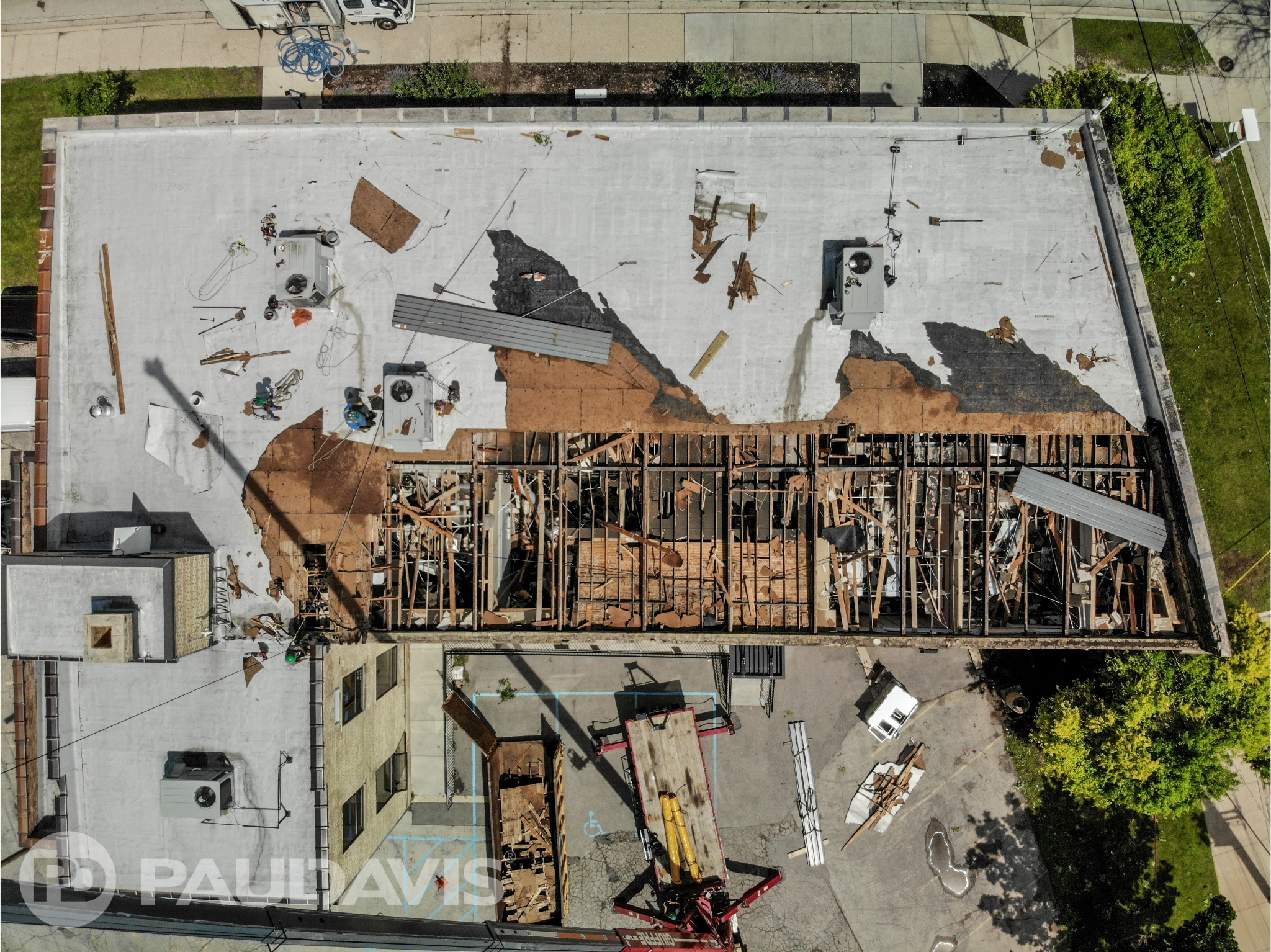
Wind afflicts people and wreaks havoc on their surroundings. Atlantic Canada residents know this all too well after Hurricane Fiona’s visit last year. The devastating storm’s gale exceeded 100 kilometres per hour, ripping off roofs, dislodging trees and making history as one of the most expensive weather disasters ever in Canada.
Paul Davis is very familiar with this particular type of weather violence. “Wind is rated as the top cause of property damage expenses,” says Caleb Brunz, President of Paul Davis of MSP, Minnesota. “It’s a powerful force that is capable of destroying many natural features and almost any built item humans can invent. Commercial buildings are frequently at high risk. Fortunately, five precautionary measures reduce property owners’ chances of falling prey to this historic force.”
- Reinforce building envelopes: Repair roofs, anchor external fixtures like through spouts, and strengthen doors and windows. Additionally, securely fasten external systems like air handlers, particularly systems mounted on rooftops. It’s not uncommon for sizeable objects in exposed locations to dislodge and tumble across flat roofs, inflicting extensive damage.
- Manage landscaping: Clear debris that could become airborne. Trim trees, paying particular attention to branches that could strike buildings if they fall.
- Secure outdoor items: Fasten down exterior furniture, check sign mountings and tie down waste containers. Any of these – no matter how heavy they are - can become pushed or blown projectiles in high winds.
- Shield outdoor assets: Are work vehicles and equipment exposed to weather? High winds can fling debris against vehicles, breaking windows and pitting finishes. Consider garaging them temporarily or relocating them to safer locations until winds die down.
- Review coverage and response plans: Check insurance coverage for wind damage by contacting your agent. If the property at risk is commercial, contact Paul Davis for a free Emergency Preparedness Plan. Tailored to individual businesses, plans comprise information specific to property and operations, such as emergency contacts, preferred trade and supplier partners, specific mechanical room information, locations of shutoff switches and a variety of additional details you will need in an emergency.
“About 40 percent of businesses closed by disasters never reopen,” says Brunz, “and of those that do reopen, most had emergency plans in place. But whether it’s a commercial or residential property, Paul Davis Restoration can get you ready for high winds before the high wind dangers arrive.”
